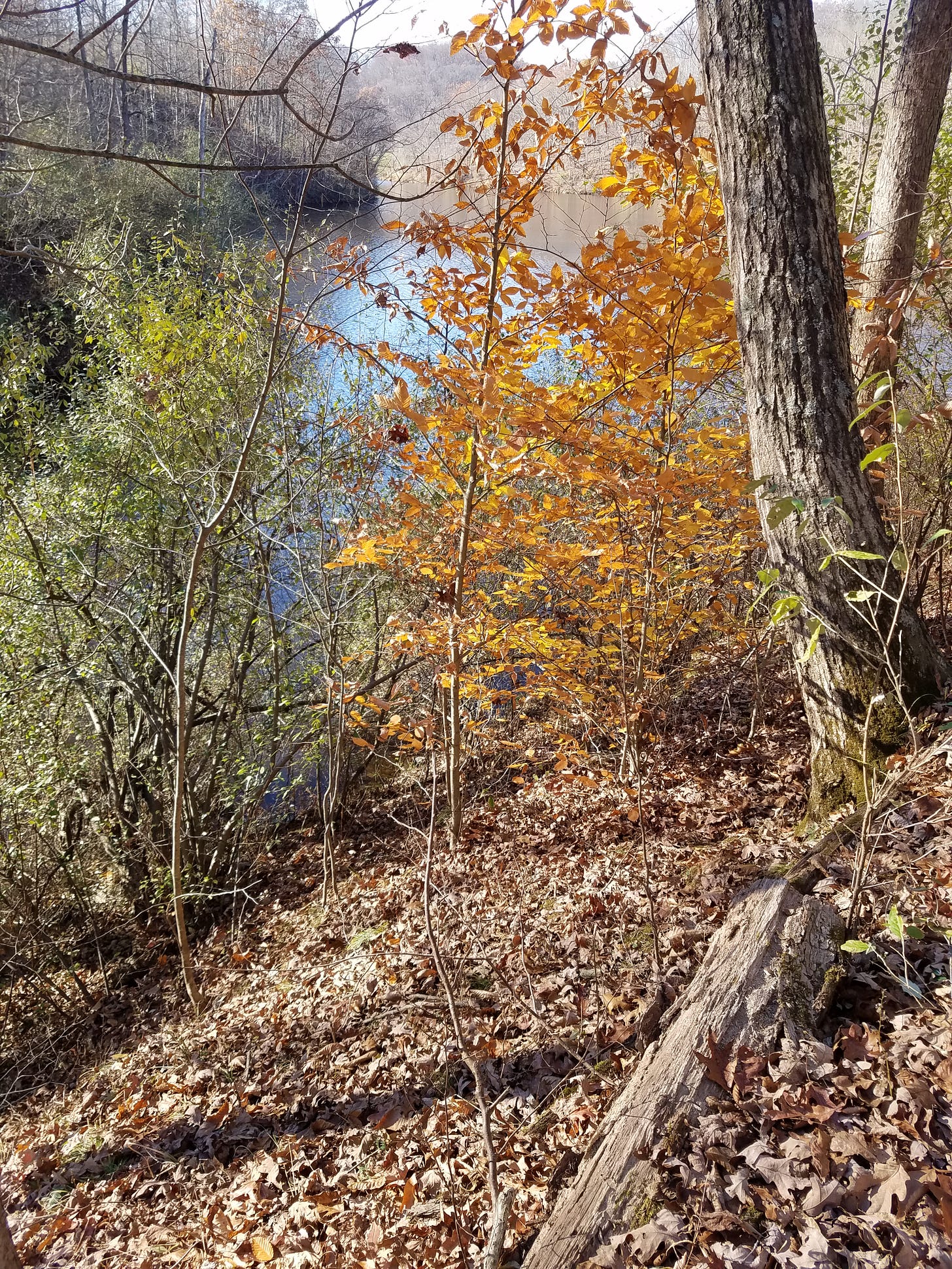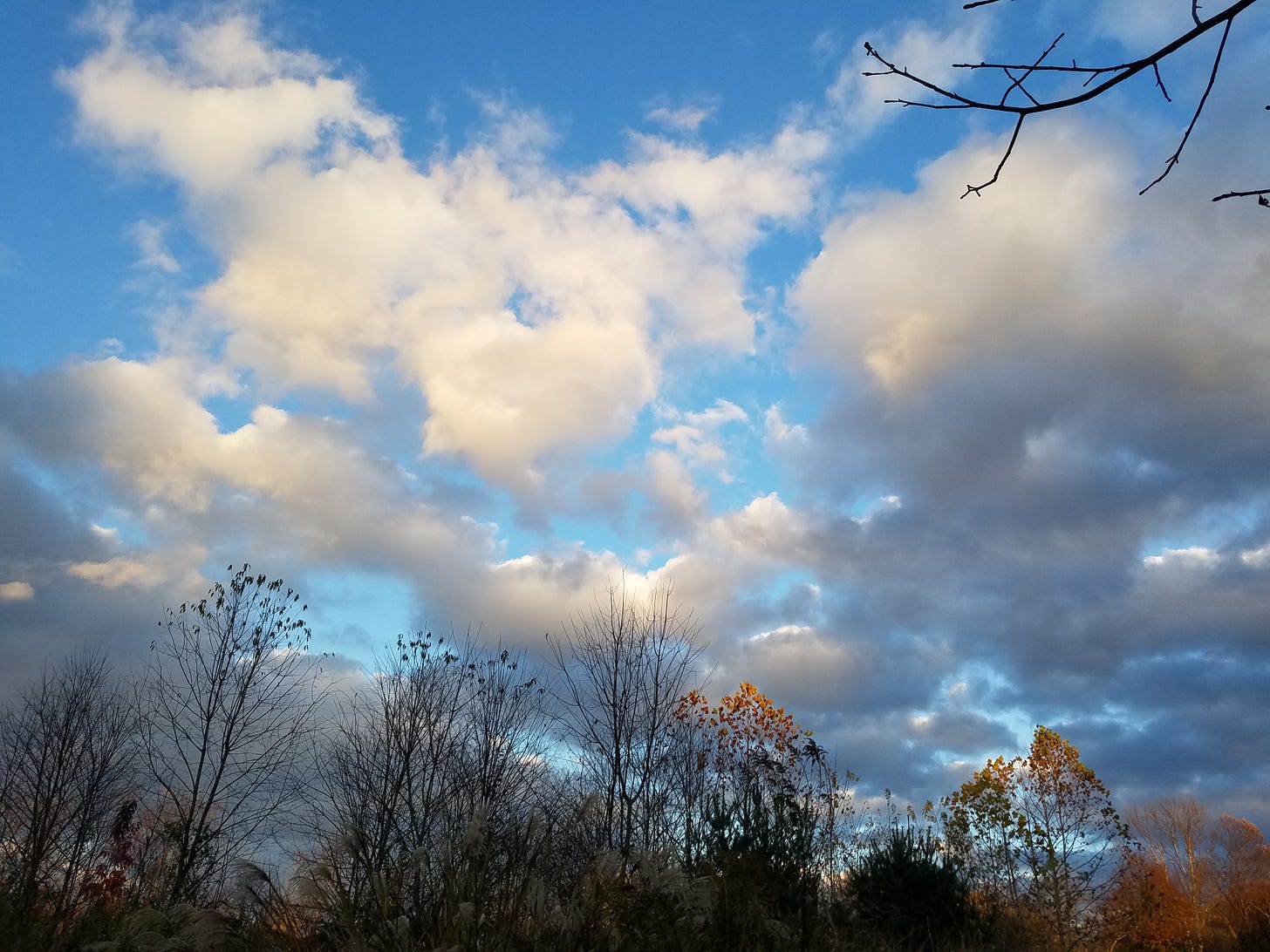Small and slow solutions
Thoughts for permaculture aspirants on simplifying everything, punctuated with enticing fall scenes
The lure of the complex solution
The idea of using small and slow solutions is so important in permaculture that it's included as one of the 12 design principles. While it seems intuitive to use that which can easily be installed, repaired, or replaced if necessary, we're so used to complicated solutions that we don't always recognize them as such.
We activate complex machines to wash our dishes and percolate our coffee, and use water that's been purified to potability to flush our toilets. We drive to work in two ton machines that are purposefully made to be difficult to fix by ourselves. These machines make accomplishing tasks seem incredibly simple and convenient — until something goes wrong. Suddenly our solution turns into a big and expensive problem.
Because they are baked into our culture, we can't simply abandon elaborate systems. Paradoxically, it requires wealth to eschew electricity or central heating systems, because the housing available to the average person includes such amenities. To forego a car we need to be lucky enough to live in walkable distance to necessities, or where good public transportation exists.
Even when we see them for what they are, it's difficult to escape or change entrenched systems. The trick is to resist replicating unneeded complexity when implementing our own permaculture systems, while participating less in profit-driven solutions.
Capitalism is a problem
In my neighborhood, three garbage trucks traverse the street each week when one would suffice, due to the competition that arises from what is generally known as the free market. The solution to this noisy waste of time and fuel is simple — analyze the situation and allocate garbage truck trips in the most efficient way so the fewest trips are made while incentivizing reducing personal waste. Taking solid waste management as an example, it's easy to see that applying permaculture principles is antithetical to capitalism. More waste and more truck trips equals more opportunities for entrepreneurial garbage collectors.
There are many equally comical practices in the gardening and landscaping world that we can look to for examples of what not to do. One homeowner installs expensive berms, swales, French drains, and dry wells because excess moisture is negatively effecting his ability to grow grass. Meanwhile the neighbor on the uphill side pays even bigger bucks for an irrigation system to keep his lawn watered.
This situation creates many opportunities for money to exchange hands, but sits in direct opposition to the concept of “permanent agriculture.” Enormous effort has gone into brute-forcing uniformity with the only yield being a turf lawn that pleases the eye of the homeowner.
An improvement but no cigar
What if the all the resources these homeowners squandered on grass were directed toward an edible landscape full of native plants that supported local wildlife? What if the irrigation system watered fruit trees and the berm/swale/drain system directed moisture to a pond and water loving plants?
This scenario would be an improvement, but certainly not one above criticism. It has an eye to positive and tangible outcomes, but relies on a complex, build system with significant embedded energy and potentially costly upkeep. It represents an example of the state of much of permaculture today — heavy on the noble goals, but light on understanding of the process of getting there.
This isn't surprising considering permaculture is en vogue, with many fresh-faced converts eager to spend money to achieve their goals. Time-saving gadgetry such as irrigation systems and wood chippers, and items for instant results like expensive EPDM pond liners and elaborate hydroponic setups have obvious appeal.
But if slowing down and resisting the temptation to purchase ready-made solutions was the norm, permaculture would take it's rightful place as a set of tools anyone can use, regardless of the balance of their bank account. Both energy inputted and waste produced would drop dramatically. Interactions with, and understanding of, the natural world would rise. More cooperation would result, and less of the mindset of permaculture property as self-contained fiefdom.
What if the lawn loving neighbors in my imagined scenario collaborated to grow crops like beans or drought tolerant native trees and shrubs in the drier areas? What if they created rain gardens in the naturally wet spots, or expanded them by hand digging to make vernal pools?
These are just a couple of projects that I might undertake in such circumstances because they are simple, I would enjoy implementing them, and they would produce useful results. The fictional neighbors, should they suddenly come to life, might come up with totally different ideas, freed from the confinement of pre-fab, complex solutions. Innovation, that elusive element that is so often lacking in permaculture, might creep in. And that would be a very good thing.








A very reasoned and compelling essay. If only more of us were as observant of natural systems! I think I am getting the idea that permaculture is really a sort of mindfulness (an overused word lately, I know, but it fits here).
Lovely photos Lynn. I like the idea of small solutions. I recently had a rain barrel installed and am using the water for my indoor plants. In the warmer weather, I will use it to keep outdoor plants happier. It fills my soul every time I turn the spigot and reminds me of the rain barrels outside my grandparents' cabin, when I was little.